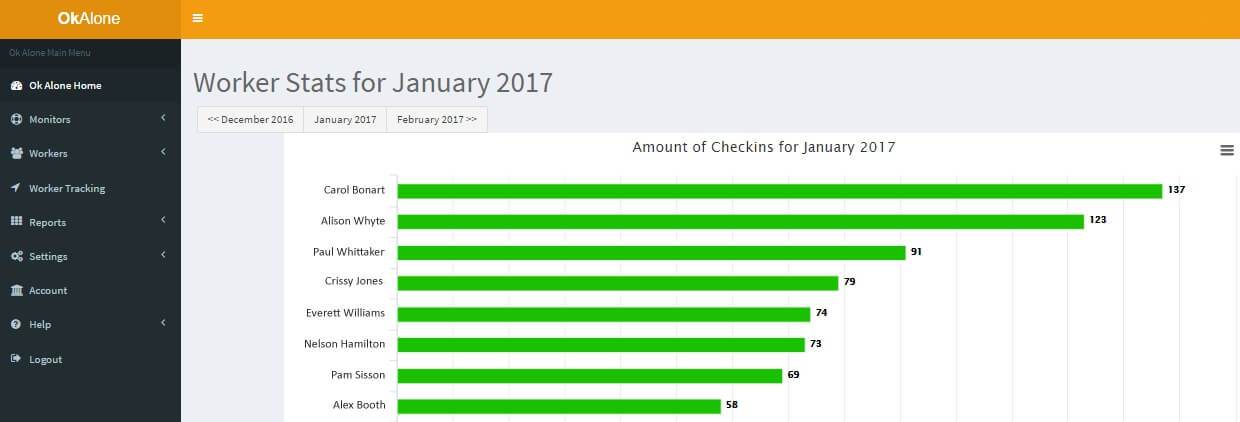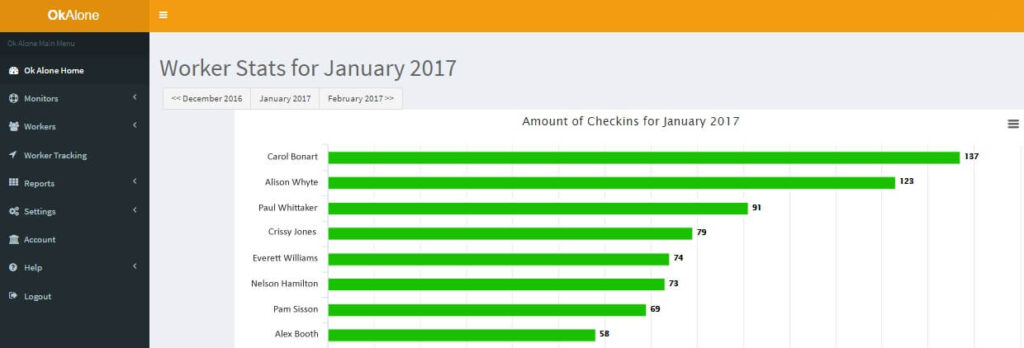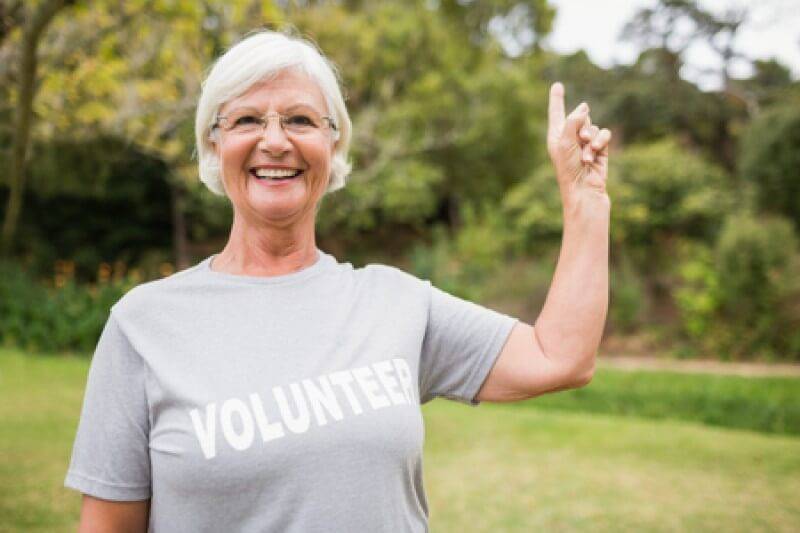Using Ok Alone’s charts to coach your team on safety

When you first look at this picture, what stands out to you? Anything unusual? There’s quite a spread between Carol with a 137 check-ins and Alex, with only 58. Why would that be? Are they working different shifts? Why does Alex have less than half as many check-ins as Carol?

On its own, the number of check-ins does not tell the whole story, but it’s an early indicator. If you dig a little deeper and look at the number of missed check-ins, you can see Alex also tops that list. Why would that be? The person with the fewest successful check-ins has the most missed check-ins.

Alex may be one of those people who doesn’t like monitoring systems. He finds it an invasion of his privacy. While this is a common misconception, it also presents an opportunity to share with Alex why the company is investing in safety systems designed to protect him.
The important thing is that by using these Ok Alone reports, the discussion can be based around objective measures and behaviours. It stops it from being seen as a personal attack or something that’s being forced upon them.
Ideally, Alex will see that by checking in regularly, he ensures help is available if he needs it, it will come if he can’t ask for it and the company is committed to his well-being. And that’s what Ok Alone is committed to too.
Book a Demo Today
Alternatively, get a free trial of the app
Want to try OK Alone? Click the button below and enter your details. It's free and no credit card is required.





